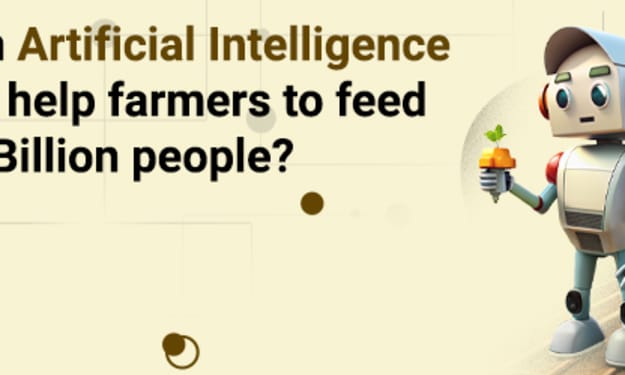Understanding how the Internet works?
From Protocols to Cloud Computing and Everything in between

The internet is an incredible tool that has transformed the way we live, work, and communicate. It allows people to connect with each other, access information from anywhere in the world, and engage in commerce and entertainment.
In this article, we will take a deep dive into how the internet works.
What is the Internet?
The internet is a global network of interconnected computers and servers that communicate with each other using standard protocols. The internet allows users to share information and communicate with each other through various applications and services. The internet is a distributed network, which means that there is no central control over it.
The internet is made up of several layers, each with its own set of protocols and standards. The layers work together to provide a seamless experience for users.
The layers of the internet are as follows:
- Physical Layer
- Data Link Layer
- Network Layer
- Transport Layer
- Application Layer
Physical Layer
The physical layer is the lowest layer of the internet. It is responsible for the transmission and reception of raw data over a physical medium. The physical medium can be a copper wire, optical fiber, or wireless communication.
The physical layer uses various technologies to transmit data over the physical medium.
These technologies include:
Twisted Pair:
This is a type of cable that is commonly used in Ethernet networks. It consists of two copper wires twisted together to reduce interference.
Coaxial Cable:
This is another type of cable that is used in cable TV networks. It consists of a copper core surrounded by a layer of insulation, a metal shield, and an outer plastic sheath.
Fiber Optic:
This is a type of cable that uses light to transmit data over long distances. It consists of a core made of glass or plastic surrounded by a layer of insulation and a protective outer sheath.
Wireless Communication:
This is a type of communication that uses electromagnetic waves to transmit data. It includes technologies like Wi-Fi, Bluetooth, and cellular networks.
Data Link Layer
The data link layer is responsible for the transfer of data between two adjacent devices in a network. It provides a reliable and error-free communication channel between devices.
The data link layer uses two protocols:
Media Access Control (MAC):
This protocol is responsible for controlling access to the physical medium. It ensures that only one device transmits data at a time to avoid collisions.
Logical Link Control (LLC):
This protocol is responsible for error detection and correction. It ensures that the data received is accurate and error-free.
Network Layer
The network layer is responsible for the routing of data between different devices in a network. It determines the best path for data to travel from the source device to the destination device.
The network layer uses several protocols, including:
Internet Protocol (IP):
This protocol is responsible for addressing and routing data packets across the internet.
Routing Protocols:
These protocols are responsible for determining the best path for data to travel across the network.
Transport Layer
The transport layer is responsible for providing reliable data transfer between two devices in a network. It ensures that data is delivered in the correct order and without errors.
The transport layer uses two protocols:
Transmission Control Protocol (TCP):
This protocol is responsible for providing reliable, error-free data transfer between two devices. It establishes a connection between the two devices before transmitting data.
User Datagram Protocol (UDP):
This protocol is responsible for providing fast, unreliable data transfer between two devices. It does not establish a connection before transmitting data.
Application Layer
The application layer is the highest layer of the internet. It is responsible for providing services and applications to users.
Examples of applications include email, web browsing, and file sharing.
The application layer uses various protocols, including:
Hypertext Transfer Protocol (HTTP):
This protocol is used for transferring web pages and other web resources between servers and clients.
Simple Mail Transfer Protocol (SMTP):
This protocol is used for sending and receiving email messages.
File Transfer Protocol (FTP):
This protocol is used for transferring files between computers.
Domain Name System (DNS):
This protocol is used for translating domain names into IP addresses.
How Does Data Travel Across the Internet?
Data travels across the internet in the form of packets. A packet is a small unit of data that is transmitted between devices in a network. Each packet contains a header and a payload.
The header contains information about the packet, such as the source and destination addresses, the type of data, and the sequence number. The payload contains the actual data that is being transmitted.
When a user sends a request over the internet, the request is divided into multiple packets. Each packet is sent separately across the internet. The packets may take different paths to reach the destination device, depending on the routing protocols used.
When the packets reach the destination device, they are reassembled into the original request. The destination device then sends a response back to the source device in the form of packets.
The packets may take different paths on their way back to the source device. This is because the internet is a distributed network, and different devices may have different routing protocols.
What is the World Wide Web?
The World Wide Web (WWW) is a system of interlinked hypertext documents that are accessed through the internet. The WWW is often used interchangeably with the term "internet," but they are not the same thing.
The WWW was invented by Sir Tim Berners-Lee in 1989 while working at CERN, the European Organization for Nuclear Research. Berners-Lee wanted to create a way for scientists to share information over the internet.
The WWW consists of web pages that are written in Hypertext Markup Language (HTML). HTML is a markup language that is used to structure web pages and create links between them.
Web pages are accessed through web browsers such as Google Chrome, Mozilla Firefox, and Microsoft Edge. The browser sends a request to a web server, which then sends the web page back to the browser in the form of HTML code.
What is an IP Address?
An IP address is a unique identifier that is assigned to every device on the internet. An IP address allows devices to communicate with each other over the internet.
There are two types of IP addresses:
IPv4:
This is the older version of IP addresses and consists of 32 bits. IPv4 addresses are written in decimal notation, separated by dots. For example, 192.168.1.1.
IPv6:
This is the newer version of IP addresses and consists of 128 bits. IPv6 addresses are written in hexadecimal notation, separated by colons. For example, 2001:0db8:85a3:0000:0000:8a2e:0370:7334.
An IP address is assigned to a device by an Internet Service Provider (ISP). The ISP assigns a public IP address to the device, which is used to communicate with other devices over the internet.
What is DNS?
DNS stands for Domain Name System. DNS is a protocol that is used to translate domain names into IP addresses. Domain names are easier for humans to remember than IP addresses.
When a user enters a domain name in a web browser, the browser sends a request to a DNS server to resolve the domain name into an IP address. The DNS server then sends the IP address back to the browser, which uses it to communicate with the web server.
DNS servers are distributed across the internet, and there are several levels of DNS servers. The top-level DNS servers are responsible for maintaining the root zone file, which contains information about the top-level domains (TLDs) such as .com, .org, and .net. The next level of DNS servers are responsible for maintaining information about the domain names registered under each TLD. This information is then cached by local DNS servers, which are typically maintained by ISPs.
What is a Web Server?
A web server is a computer that stores web pages and other web resources and makes them available to clients over the internet. Web servers are typically maintained by web hosting companies or organizations that want to host their own websites.
Web servers use the HTTP protocol to communicate with clients. When a client sends a request to a web server, the server sends back the requested web page or resource.
Web servers can be configured to serve static or dynamic content. Static content is web pages that are pre-built and do not change frequently, such as images and HTML files. Dynamic content is web pages that are generated on the fly, such as web pages that are personalized based on user input.
What is a Web Browser?
A web browser is a software application that is used to access web pages and other web resources over the internet. Web browsers communicate with web servers using the HTTP protocol.
Web browsers render web pages using HTML, CSS, and JavaScript. HTML is used to structure web pages, CSS is used to style web pages, and JavaScript is used to add interactivity to web pages.
There are several web browsers available, including Google Chrome, Mozilla Firefox, and Microsoft Edge. Each web browser has its own set of features and capabilities.
What is a Search Engine?
A search engine is a web application that is used to search for information on the internet. Search engines use web crawlers to index web pages and create a searchable index of web pages.
When a user enters a search query into a search engine, the search engine searches its index for relevant web pages and returns a list of results. The results are typically ranked based on relevance and popularity.
Some popular search engines include Google, Bing, and Yahoo. Each search engine has its own algorithm for ranking search results.
What is E-commerce?
E-commerce, or electronic commerce, is the buying and selling of goods and services over the internet. E-commerce has grown significantly in recent years, as more people shop online.
E-commerce websites allow users to browse and purchase products online. E-commerce websites typically use secure payment gateways to process payments.
E-commerce websites may also use marketing techniques such as search engine optimization (SEO) and social media marketing to drive traffic to their websites.
What is Cloud Computing?
Cloud computing is the delivery of computing services over the internet. Cloud computing allows users to access computing resources on-demand, without the need for on-premises infrastructure.
Cloud computing services can be divided into three categories:
Infrastructure as a Service (IaaS):
This category includes services that provide virtual machines, storage, and networking resources.
Platform as a Service (PaaS):
This category includes services that provide a platform for developing and deploying applications.
Software as a Service (SaaS):
This category includes services that provide software applications over the internet.
Some popular cloud computing providers include Amazon Web Services, Microsoft Azure, and Google Cloud Platform.
About the Creator
Sarah Ahmad
I am a versatile professional with skills in content creation, digital marketing, and teaching. I am experienced in writing articles, creating videos and graphics, and managing social media platforms.






Comments
There are no comments for this story
Be the first to respond and start the conversation.